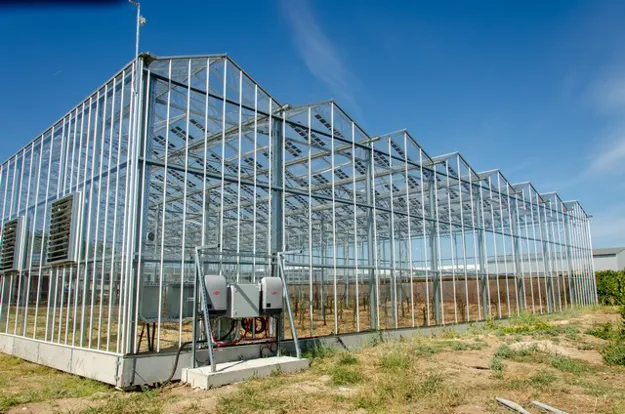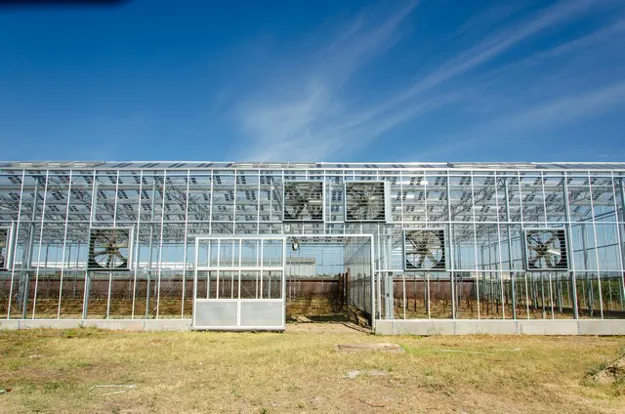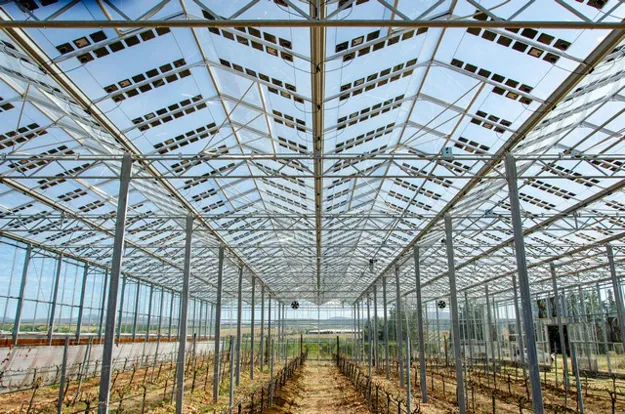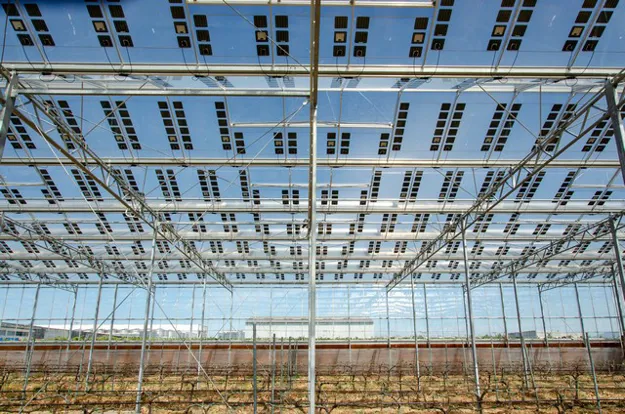Greece winemaker Tsantalis developed an experimental greenhouse for viticulture cultivation, using Solar Glass of the company Brite. This fully automated greenhouse has a cultivation area of 1,200 m² and operates all year round due to its heating and cooling systems. The cultivated crop is a grape variety native to Greece, called Αsyrtiko, and used for making white wine.


After a cultivation cycle, Brite conducted a detailed study aimed to determine the carbon footprint per kilogram of grapes produced in the greenhouse. The study considers all factors contributing to the CO2 emissions footprint:
i. Greenhouse infrastructure
ii. Heating / cooling energy requirements
iii. Electricity needs & Brite’s solar glass PV system electricity production
iv. Crop Cultivation Operations
v. Fertilizers & Plant Protection Products
vi. Irrigation
The study outcome for this cultivation yields a carbon footprint of -15,78 kg CO2e / kg of produced grapes which is an extraordinary result and perhaps a global first for a negative carbon footprint for crop cultivation.
This result is highly attributed to the solar glass used in the greenhouse and the clean energy it produces. It points to a great potential and hope for reversing climate change by eliminating or even reversing the carbon footprint in agriculture by using solar glass in greenhouses and Agri-PV systems.


The greenhouse developed by Brite was partially funded by EU’s H2020 SME Instrument Phase II program, Project PanepowerSW 804554 titled: “Transparent Solar Panel Technology for Energy Autonomous Greenhouses and Glass Buildings” under the direction of Program Adviser Dr. Marco Cecchetto.
For more information:
Brite solar technologies
57001 Thessaloniki Greece
Contact: Dr. Nick Kanopoulos
info@britesolar.com
www.britesolar.com
